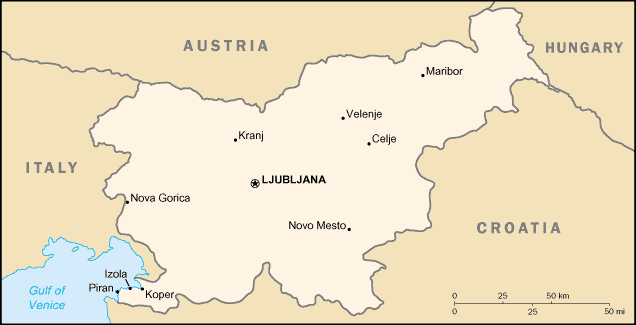Map:

Overview:
The Slovene lands were part of the Holy Roman Empire and Austria until 1918 when the Slovenes joined the Serbs and Croats in forming a new multinational state, renamed Yugoslavia in 1929. After World War II, Slovenia became a republic of the renewed Yugoslavia, which though Communist, distanced itself from Moscow's rule. Dissatisfied with the exercise of power by the majority Serbs, the Slovenes succeeded in establishing their independence in 1991 after a short 10-day war. Historical ties to Western Europe, a strong economy, and a stable democracy have assisted in Slovenia's transformation to a modern state. Slovenia acceded to both NATO and the EU in the spring of 2004.
The People:
Population: 2,011,070 (July 2005 est.)
Age structure:
0-14 years: 14% (male 145,016/female 137,012)
15-64 years: 70.6% (male 715,629/female 704,079)
65 years and over: 15.4% (male 118,298/female 191,036) (2005 est.)
Religions:
Catholic 57.8%, Orthodox 2.3%, other Christian 0.9%, Muslim 2.4%, unaffiliated 3.5%, other or unspecified 23%, none 10.1% (2002 census)
Government Type:
parliamentary democratic republic
Leader(s) to pray for:
chief of state: President Janez DRNOVSEK (since 22 December 2002)
head of government: Prime Minister Janez JANSA (since 9 November 2004)
Source: The World Factbook
View All Countries